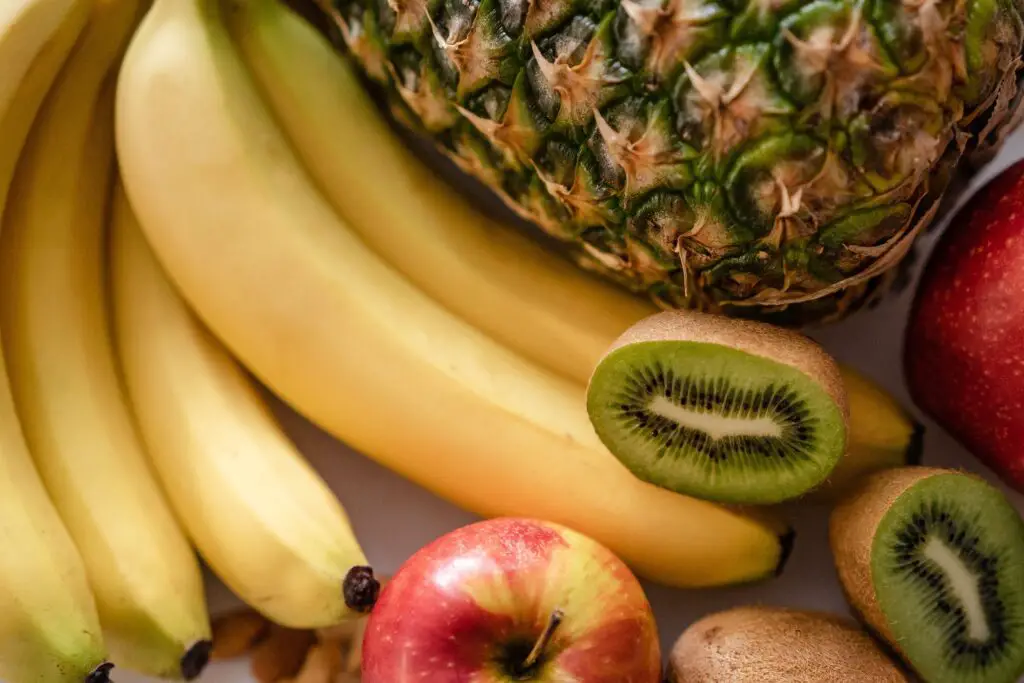Just as you bite into a juicy, crisp apple, you notice your dog is staring at you. They want a nibble for themselves, just like they do with many of your favorite foods. Fortunately, apples are completely safe for dogs to eat. Apples are not only edible to dogs, but they also make a wonderful treat for your pet.
Apples are a great source of antioxidants, and there is evidence that eating apples can reduce your risk of heart disease, diabetes, and asthma. That being said, before you give your dog apples, remember a few safety precautions.

Are Apples Beneficial To Dogs?
In moderation, apples are fine for dogs, but never as a main course. You can give fresh apple slices—including the skin—to your dog. Apple cores pose a choking hazard, so avoid giving them to your dog.
Apples are a great way to get vitamin C, which is important for healthy immune system operation. They also contain a lot of fiber, which aids in digestion and blood sugar regulation, and carbohydrates, the best energy source.
Do Apples Damage Dog Teeth?

It’s improbable that the sugars in apples cause their dog’s teeth to decay, but some people might wonder.
Apples are generally safe for teeth because of their high water content, which helps wash away the sugar from the inside of the mouth. A bonus are the apple skins, which double as a toothbrush.
Dogs Can Eat How Many Apples?
Although they still contain sugar, apples do provide a healthy alternative for dog treats. Diarrhea may result from a change in your dog’s gut brought on by an excessive sugar intake. Thus, you should restrict how many apples you give your dog.
Veterinary nutritionists advise treating your dog to no more than 10% of their daily caloric intake as a general rule.
Are you unsure of your dog’s daily calorie intake? For further advice, consult your veterinarian or make use of a calorie calculator. For instance, a 65-pound healthy dog needs roughly 1240 calories (kcal) per day. Thus, their treat allotment would be roughly 124 kcal, or roughly one medium apple.
Is it OK for dogs to eat Apple Chips, Applesauce, or Apple Juice?

Apple chips, applesauce, and apple juice are examples of less nutrient-dense apple products.
Store-bought apple chips, also known as dehydrated apple pieces, typically lack fiber and contain added sugar. While store-bought applesauce and apple juice might have a high water content, they might also lack fiber and contain added sugar.
Diabetes and weight gain can result from these combinations. Dogs can, however, consume homemade or store-bought versions as long as they are moderated and don’t contain added sugar.
Are Apples Bad for a Dog’s Teeth?
Although it is unlikely, some people may wonder if the sugars in apples cause their dog’s teeth to decay.
Because apples have a high water content, the sugar in them will be washed out of the mouth, making apples generally safe for teeth. One bonus is that the apple skins double as a toothbrush.
The Skinny on Apple Skin for Dogs
Canines cannot be poisoned by apple skin alone. Actually, it has a healthy amount of fiber in it, which helps with digestion and gut health. There are a few reasons, though, why you might want to think about peeling the apple before giving it to your dog.
Digestive Discomfort: High-fiber foods like apple skin, especially for dogs with sensitive stomachs, can upset some dogs’ digestive systems. Your dog may experience symptoms such as diarrhea, vomiting, and gas if they consume a significant quantity of apple skin.
Safe and Healthy Apple Snacking for Dogs
Thus, what can you do to make sure your dog gets a tasty and nutritious apple treat? Here are some essential pointers:
Wash Well: To get rid of any dirt, bacteria, and leftover pesticide residue, wash the apple well with warm water whether or not you peel it.
Portion Control: Dogs should only occasionally receive apples. For most dogs, a few slices or a tiny chunk is sufficient.
Size Counts: To avoid choking, cut the apple into bite-sized pieces. This holds particular significance for smaller breeds.
Elimination of Seeds: Small quantities of amygdalin, which in the digestive system can turn into cyanide, are present in apple seeds. Remove the seeds and core before sharing, even though the amount is usually not going to cause serious harm.
Apple Alternatives for Dogs

Apples are a good treat every now and then, but depending on your dog’s specific needs, there are other fruits and vegetables that might be a better fit. Here are some options to think about:
Bananas: Packed with fiber and potassium, bananas are a fantastic natural energy source for dogs. Just watch out that you only give them in moderation—too much potassium can be dangerous.
For the majority of dogs, blueberries are a tasty and safe snack that are packed full of antioxidants.
Cantaloupe: Packed with water and vitamins, cantaloupe is a cool treat for dogs during the summer. Simply take out the seeds first.
Verdant Beans: Green beans are a high-fiber, low-calorie snack that is also good for dogs’ teeth.
The Core takeaway on Apple Skin and Dogs
Although not intrinsically harmful to dogs, apple skin may contain pesticide residue and cause upset stomach in certain individuals. The best course of action is to give the apple a thorough cleaning, take out the seeds and core, and chop it into small pieces. Peel the apple before giving it to your dog or choose organic apples if you’re worried about pesticides or digestion. Always keep in mind that moderation is the key when it comes to treats, even apples.
Can Dogs Munch on Apple Skin? Unsure About Sharing This Crunchy Treat?
People all across the world love apples, which are a staple fruit. Can our furry best friends, however, partake in the fun of apple picking? In regards to dogs and apples, the answer is indeed true, but only after taking a few crucial factors into account. Although most dogs can safely and healthily eat apple flesh, the topic of apple skin can be more complicated.
The Deal with Apple Skin for Dogs
Dogs cannot be poisoned by apple skin on its own. It actually contains a healthy amount of fiber, which can aid in digestion and maintain the health of your dog’s gut. Nonetheless, there are a few reasons you might want to reconsider allowing your dog to chew on skin:
Digestion Issues: Apple skin is a high-fiber food, and excessive fiber consumption can cause stomach problems in some dogs, particularly those with delicate digestive tracts. If your dog consumes a lot of apple skin, symptoms such as vomiting, diarrhea, and severe gas may occur.
Pesticide Risk: During their growth, conventional apples are frequently sprayed with pesticides. Although it’s not always guaranteed, washing the apple can help remove some of this residue.
Safe and Sound Apple Snacking for Dogs
Thus, what can you do to make sure your dog gets a tasty and nutritious apple treat? Here are some important pointers to remember:
Wash It Well: Regardless of whether you peel the apple or not, thoroughly wash it in warm water to get rid of any remaining pesticide residue as well as dirt and bacteria.
Portion Patrol: Dogs should only occasionally be given apples. For most dogs, a few slices or a tiny chunk is sufficient.
Size Counts: To avoid choking, cut the apple into bite-sized pieces. This holds particular significance for smaller breeds.
Apple seeds are a good source of seed safety because they don’t contain much amygdalin, which the digestive system can turn into cyanide.
